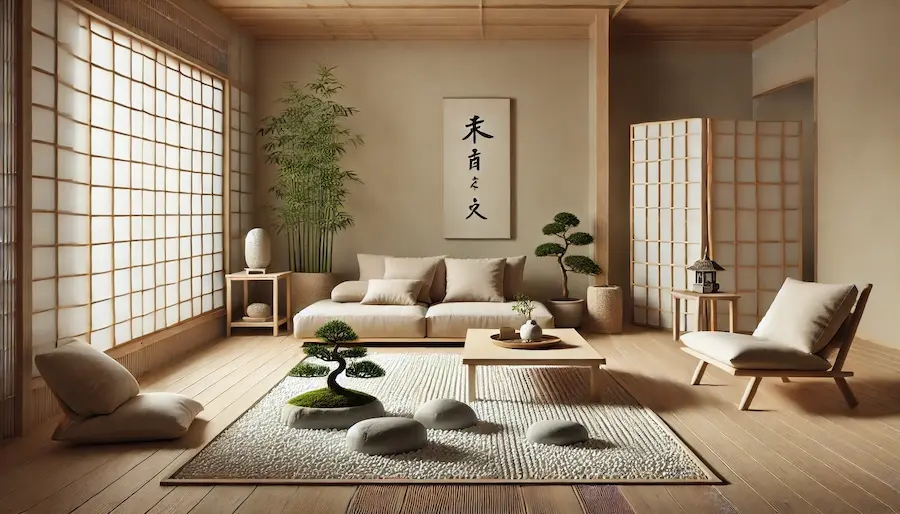Designing a Zen garden living room creates a tranquil and harmonious space that fosters relaxation and mindfulness. Here’s a comprehensive guide to achieving this serene environment:
Introduction to Zen Garden Living Rooms
A Zen garden living room integrates minimalist design principles with natural elements to evoke a sense of peace and balance. Inspired by traditional Japanese aesthetics, this style emphasizes simplicity, natural materials, and a seamless connection between indoor and outdoor spaces.
History and Origins of Zen Design
Zen design draws from Japanese Zen Buddhism, focusing on simplicity, natural beauty, and the art of imperfection known as wabi-sabi. Traditional Japanese architecture incorporates elements like shōji screens, tatami mats, and natural materials to create harmonious living spaces.
Key Features of Zen Garden Living Rooms
- Natural Materials: Incorporate wood, stone, and bamboo to bring warmth and texture. These materials connect the space to nature, fostering a calming atmosphere.
- Minimalist Furniture: Choose low-profile seating and simple designs to maintain an uncluttered environment. This approach emphasizes functionality and openness.
- Indoor Plants: Introduce greenery to enhance tranquility and improve air quality. Plants like bonsai or bamboo are ideal for maintaining a Zen aesthetic.
- Neutral Color Palette: Utilize soft, earthy tones such as beige, gray, and white to create a soothing ambiance. These colors promote relaxation and complement natural materials.
- Natural Light: Maximize natural light to create an open and airy feel. Large windows or shōji screens can diffuse light softly throughout the space.
Applications of Zen Elements in Living Room Design
- Indoor Zen Garden: Incorporate a small sand or rock garden as a focal point to bring the essence of a traditional Zen garden indoors. This feature adds a meditative aspect to the room.
- Water Features: Add a subtle water element, like a tabletop fountain, to introduce soothing sounds and enhance the serene atmosphere. The gentle flow of water can promote relaxation and mindfulness.
- Natural Textiles: Use fabrics made from natural fibers, such as cotton or linen, for cushions and throws to add comfort while maintaining simplicity. These materials contribute to the organic feel of the space.
Considerations When Designing a Zen Garden Living Room
- Clutter-Free Space: Maintain an organized environment by minimizing decorative items and keeping only essential furnishings. This practice aligns with Zen principles of simplicity and order.
- Balance and Harmony: Arrange furniture and decor to create a balanced layout that promotes a sense of harmony. Symmetry and proportion are key elements in achieving this balance.
- Connection to Nature: If possible, design the living room to overlook a garden or natural landscape, enhancing the indoor-outdoor connection central to Zen philosophy. This integration fosters a deeper sense of tranquility.
Conclusion
Creating a Zen garden living room involves thoughtful integration of natural materials, minimalist design, and harmonious elements to cultivate a peaceful and inviting space. By embracing simplicity and nature, you can transform your living room into a sanctuary of serenity.
